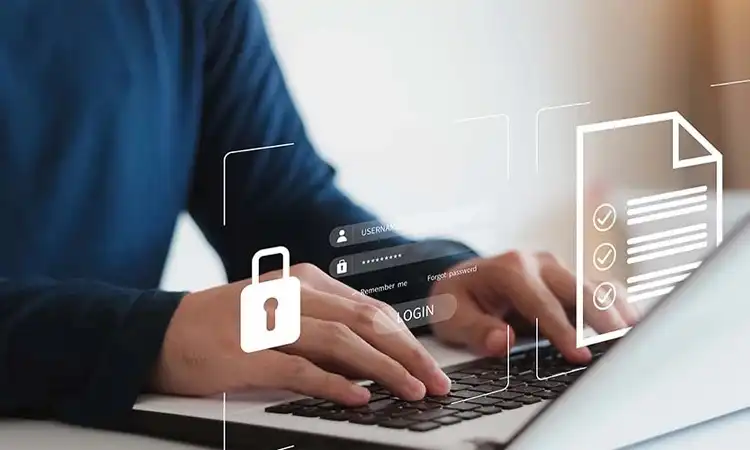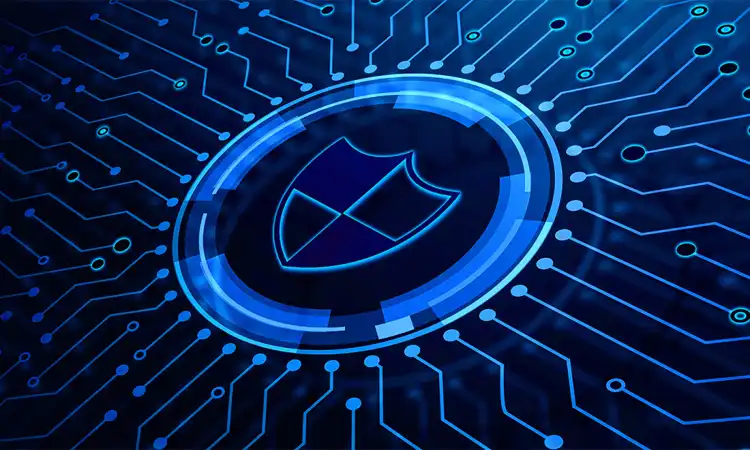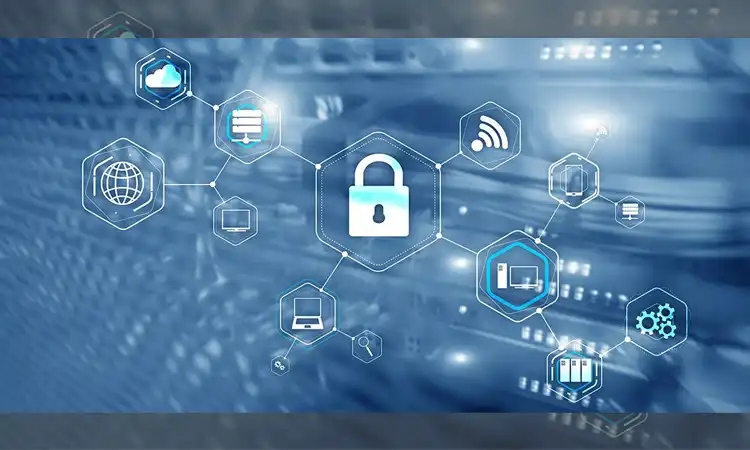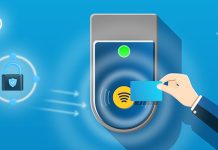As more and more employees work remotely, ensuring network security has become a top priority for businesses. Network Security Best Practices are essential to safeguard your company’s sensitive information, prevent cyber-attacks and data breaches, and maintain the trust of your customers. In this article, we’ll explore the most effective ways to secure your remote workers and the best tools and technologies to help you do so. Following these best practices can protect your business from cyber threats and ensure your remote workers can work safely and securely.
Use Secure Network Connections

There are several factors to consider when securing network connections for remote workers. Understanding the network connections available can help businesses choose the most appropriate solution. Implementing best practices for securing network connections is essential to protect against cyber threats. Fortunately, many tools and techniques are available to help businesses secure their network connections and keep sensitive information safe.
Different Types of Network Connections
Remote workers may use several types of network connections to access company resources. The most common styles include virtual private networks (VPNs), Remote Desktop Protocols (RDP), and cloud-based services.
A VPN (virtual private network) is a service that creates a safe, encrypted online connection. Internet users may use a VPN to give themselves more privacy and anonymity online or circumvent geographic-based blocking and censorship.
What is a VPN? Definition from SearchNetworking – TechTarget
VPNs provide a secure and encrypted connection between a remote worker’s device and the company’s network. RDP allows remote workers to access their computer remotely and control it as if sitting in front of it. Cloud-based services, such as Google Drive and Dropbox, enable remote workers to store and share documents and files from anywhere with an internet connection.
Each type of network connection has its advantages and disadvantages. VPNs offer high levels of security, but they can be slow and require technical expertise to set up. RDP is easy to use but can be vulnerable to cyber attacks if not properly secured. Cloud-based services are convenient and accessible but may not meet specific security requirements.
When choosing a network connection for your remote workers, it’s essential to consider the level of security, accessibility, and ease of use required for your business.
Best Practices for Securing Network Connections
Securing network connections is one of the most important means of protecting sensitive business information and preventing cyber attacks. Here are some best practices for securing network connections for remote workers:
- Use VPNs to establish secure connections that encrypt data transmissions and protect against unauthorized access.
- Require strong passwords and multifactor authentication for all network connections.
- Implement regular software updates to address security vulnerabilities and protect against threats.
- Use firewalls to monitor and control network traffic and block unauthorized access.
- Monitor network activity for unusual behavior, such as large data transfers or login attempts from unique locations.
- Train remote workers on safe network practices, such as avoiding public Wi-Fi networks and recognizing phishing attempts.
- Limit network access to only the resources that remote workers need to perform their jobs.
- Develop a network security policy outlining best practices and procedures for remote workers.
By following these best practices, businesses can ensure that their remote workers use secure network connections and minimize the risk of cyber-attacks and data breaches.
Tools and Technologies for Secure Network Connections
Here are several tools and technologies businesses can use to secure network connections for remote workers. Here are some of the most commonly used:
- Virtual Private Networks (VPNs): A VPN is a secure and encrypted connection between a remote worker’s device and the company’s network. VPNs ensure that data transmissions are protected from unauthorized access.
- Multifactor Authentication (MFA): MFA requires remote workers to provide additional information beyond a username and password to access network resources. This can include a security token, biometric data, or a verification code.
- Antivirus and Antimalware Software: These programs protect against viruses, malware, and other cyber threats that can compromise network security.
- Firewalls: Firewalls monitor and control network traffic, blocking unauthorized access and preventing cyber attacks.
- Network Access Control (NAC): NAC systems authenticate remote workers and devices before allowing them to access network resources, ensuring that only authorized users can access sensitive information.
- Remote Desktop Software: Remote desktop software allows remote workers to access their computers and perform tasks as if they were physically present at the office.
Businesses can secure their network connections and protect against cyber-attacks and data breaches by utilizing these tools and technologies.
Use Strong Authentication Mechanisms
Strong authentication mechanisms can effectively prevent unauthorized access to sensitive data and information systems. Organizations can significantly reduce the risk of data breaches and cyber-attacks by using multifactor authentication and other advanced technologies. Strong authentication mechanisms provide an additional layer of security, ensuring that only authorized individuals have access to sensitive data or systems. This can help prevent insider threats, external attacks, and other security risks. Its availability makes it an important part of any comprehensive cybersecurity strategy.
Authentication Mechanisms Importance
Authentication mechanisms help secure network connections and protect sensitive information. Here’s why:
- Unauthorized access can lead to data breaches and financial loss.
- Passwords are a standard authentication method, but they can be easily compromised.
- Multifactor authentication provides an extra layer of security by requiring additional information beyond a password, such as a security token or biometric data.
- Multifactor authentication can prevent up to 99.9% of account takeovers.
- Some types of multifactor authentication, such as biometric data, are much harder to fake or steal than passwords.
- Password managers can help ensure that employees use strong and unique passwords for all accounts.
- Mobile device management tools can enforce security policies and remotely wipe devices if necessary.
- Security awareness training can educate employees on safe authentication practices.
Businesses can protect against cyber attacks and secure sensitive information by implementing robust authentication mechanisms.
Best Practices for Creating Strong Passwords
Creating solid passwords ensures that network connections are secure and sensitive information is protected. Here are some tips for creating strong passwords:
- Use uppercase and lowercase letters, numbers, and special characters.
- Avoid easily guessable information, such as birth dates or pet names.
- Use long passwords, at least 12-15 characters long.
- Don’t reuse passwords across multiple accounts.
- Consider using a password manager to create and store unique passwords for each account.
- Change passwords regularly, at least every 90 days.
- Use two-factor authentication for added security.
- Educate employees on best practices for password security.
According to the National Institute of Standards and Technology (NIST), using long and complex passwords, combined with two-factor authentication, can significantly reduce the risk of cyber attacks. By following these best practices and making password security a priority, businesses can help prevent data breaches and protect against cyber threats.
Tools and Technologies for Multifactor Authentication
Multifactor authentication (MFA) is essential for securing network connections and protecting sensitive information. By requiring multiple verification forms, MFA significantly reduces the risk of unauthorized access and keeps data safe from cyber threats. There are a variety of tools and technologies that businesses can use to implement MFA and improve their overall security posture.
Here are some technologies and methods that businesses can use for MFA:
- Hardware Tokens: Hardware Tokens are physical devices that generate a unique code, which is used in addition to a password to gain access to a network resource. These devices can be USB drives or key fobs, commonly used in high-security environments.
- Software Tokens: These software-based tools generate unique codes or push notifications to a user’s device to verify their identity. They are often used with a smartphone app or desktop application and can be more convenient than hardware tokens. However, software tokens can be vulnerable to malware or other cyber attacks, so choosing a reputable vendor and keeping the software up-to-date is essential.
- Smart Cards: Smart cards are embedded with a microprocessor that stores and encrypts user data. Such as passwords or biometric data, and can be used in conjunction with a PIN or password.
- Biometric Authentication: Biometric authentication uses unique physical traits, such as fingerprints, iris patterns, or facial recognition, to verify a user’s identity. Biometric authentication can be a convenient and secure form of MFA, but it can also be vulnerable to hacking or spoofing. Choosing a reputable vendor and ensuring that biometric data is properly encrypted and protected is essential.
- Risk-based Authentication: This method uses machine learning algorithms to analyze user behavior and detect anomalies that may indicate a potential security threat. It can effectively identify unusual activity patterns and stop attacks in real-time. However, it can also produce false positives or be vulnerable to sophisticated attacks.
- One-Time Passwords (OTP): OTPs are temporary codes sent to a user’s device via SMS, email, or a dedicated app. They are often used with a password and can be an effective form of MFA. However, OTPs can be vulnerable to phishing attacks or other forms of social engineering.
- Push Notifications: Push notifications are messages sent to a user’s device to prompt them to approve or deny a login attempt.
- Voice Recognition: Voice recognition systems use the unique characteristics of a user’s voice to verify their identity. This method can be convenient and secure, but it can also be vulnerable to spoofing or hacking. Choosing a reputable vendor and ensuring that voice data is appropriately encrypted and protected is essential.
By implementing multifactor authentication using these tools and technologies, businesses can significantly reduce the risk of unauthorized access and keep sensitive information secure.
Use Antivirus and Antimalware Software

Antivirus and antimalware software are essential tools in the fight against cyber threats. These tools detect and remove malicious software, including viruses, spyware, adware, trojans, and worms. Antivirus software helps protect computer systems and networks from malware and other security threats. Here are some key facts about the use of antivirus and antimalware software in network security:
What is Antivirus Software?
Antivirus software protects computer systems and networks from malware, viruses, and other security threats. Antivirus software can detect and remove malware that may have already infected a system and prevent future infections by scanning files and applications for potential threats.
How does Antivirus Software Work?
Antivirus software works by scanning files and applications for signs of malware. The software compares the files to a database of known malware and flags any files that match a known signature. Many antivirus programs also use heuristic analysis, which looks for behavior patterns that may indicate malware’s presence. If the antivirus software detects a threat, it will either quarantine or remove the file, depending on the severity of the danger.
What is Antimalware Software?
Antimalware software is a type of security software designed to protect computer systems and networks from various forms of malware, including viruses, trojans, worms, and spyware. Antimalware software can detect and remove malware that may have already infected a system and prevent future infections by scanning files and applications for potential threats.
How does Antimalware Software Work?
Antimalware software works by scanning files and applications for signs of malware. The software compares the files to a database of known malware and flags any files that match a known signature. Antimalware software can also use behavioral analysis to detect threats, looking for suspicious patterns of behavior that may indicate the presence of malware. If the antimalware software detects a threat, it will either quarantine or remove the file, depending on the severity of the threat.
Why is Antivirus and Antimalware Software Important for Network Security?
Antivirus and antimalware software are critical components of network security. Malware can spread quickly throughout a network, infecting multiple systems and compromising sensitive data. A single infected system can quickly lead to a major security breach without antivirus and antimalware software. Antivirus and antimalware software help to prevent these types of breaches by detecting and removing malware before it can spread to other systems.
Related Articles: What is the Difference Between Software and Firmware?
Best Practices for Using Antivirus and Antimalware Software
If you want to get the most out of antivirus and antimalware software, it’s important to follow some best practices:
- Keep your software up to date: New malware is constantly being developed, so it’s essential to keep your antivirus and antimalware software up to date to ensure that it can detect the latest threats.
- Run regular scans: Regularly scanning your system for malware can help to detect and remove any infections before they can cause serious damage.
- Avoid downloading suspicious files: Be cautious when downloading files from the internet, especially from unfamiliar sources. Only download files from reputable websites.
- Use real-time protection: Real-time protection can help to prevent infections by detecting and blocking malware before it can infect your system.
- Use a combination of antivirus and antimalware software: Combining antivirus, and antimalware software can provide more comprehensive protection against a wider range of threats.
Antivirus and antimalware software are essential tools for network security. These tools can help detect and remove malware that may have already infected a system and prevent future infections by scanning files and applications for potential threats. By following best practices and using these tools in combination, organizations can improve their security posture and protect against cyber threats.
Implement Firewall Protection
Firewalls are a barrier between your internal network and the internet, preventing unauthorized access and potential threats. Without a firewall, your network could be susceptible to various types of cyberattacks. Firewalls monitor and control incoming and outgoing network traffic, making detecting and blocking potential threats easier.
Moreover, firewalls come in different types, such as network, host-based, and application firewalls. Each type has its own features and benefits, but all are designed to provide an additional layer of security to your network. With the right firewall in place, you can prevent unauthorized access, data theft, and other cyber attacks.
- Firewalls can also help with content filtering. It allows you to block access to websites or applications deemed inappropriate or pose a security risk. This can help prevent employees from accessing malicious websites or downloading potentially harmful software.
- Firewalls can also help prevent internal threats. By monitoring and controlling traffic within your network, you can prevent employees from accessing unauthorized resources and protect sensitive data from unauthorized access.
- Firewalls are an essential component of regulatory compliance. Many industries must comply with specific data protection regulations, such as HIPAA, PCI DSS, and GDPR. Implementing a firewall is crucial in meeting these requirements and ensuring your network is secure.
With the right firewall in place, you can prevent unauthorized access, data theft, and other cyber attacks. Firewalls also help prevent internal threats, provide content filtering, and ensure compliance with data protection regulations. Don’t wait until it’s too late; make sure your network is protected with a firewall today.
Educate Employees on Network Security Best Practices
In today’s digital age, educating employees on network security best practices is more important than ever. After all, employees are often the first line of defense against cyber threats, and their actions can significantly impact the security of an organization’s network. So, how can organizations ensure that their employees are up-to-date on the latest network security best practices? Here are some tips to help.
- Ensure employees understand the importance of cybersecurity and their role in keeping it safe. This can be accomplished through training sessions, newsletters, and other forms of communication that emphasize the importance of security and the potential risks of not following best practices.
- Be careful with password management. Employees should be trained in creating strong passwords and using unique passwords for each account. They should also be encouraged to change their passwords regularly and avoid sharing them with anyone else.
- Stay alert to phishing attacks. Employees should be educated on recognizing phishing emails and what to do if they suspect they’ve received one. This can include checking the sender’s email address, looking for spelling and grammar errors, and being cautious when clicking on links or downloading attachments.
- Ensure employees are using secure equipment and connections. This can include ensuring that devices are encrypted, that employees use secure passwords, and that they connect to the network through secure connections. Additionally, employees should be trained to identify and report any suspicious activity on their devices or network connections.
- Regular software updates and patches. Employees should be educated on the importance of keeping their devices and software up-to-date, as these updates often include security fixes that address vulnerabilities and protect against potential threats.
- Encourage a security-conscious culture to develop throughout your organization. This can include encouraging employees to report suspicious activity, rewarding good security practices, and providing ongoing training and education to keep everyone up-to-date on the latest threats and best practices.
Educating employees on network security best practices is critical for protecting an organization’s network and data from cyber threats. By emphasizing the importance of security, training employees on best practices, and fostering a culture of security awareness, organizations can significantly reduce their risk of a cyber attack and improve their overall security posture.
Implementing cybersecurity best practices can help better secure your organization’s data and assets. You can greatly reduce the risk of a data breach or cyber attack by prioritizing employee education, implementing strong security measures, and leveraging the latest tools and technologies. Remember, your cybersecurity is only as strong as its weakest link, so it takes vigilance and proactive efforts to protect your systems and data.
General Q&A About Network Security Best Practices
-
What is the role of firewalls in network security?
Firewalls are a critical component of network security that help block unauthorized access to networks and control traffic flow. They can be hardware-based or software-based.
-
How often should I update my antivirus and antimalware software?
Antivirus and antimalware software should be updated regularly, ideally daily, to ensure they can detect and protect against the latest threats.
-
What is multi-factor authentication, and why is it important for network security?
Multi-factor authentication is a security mechanism that requires users to provide two or more forms of authentication to access a system or network. It is important for network security because it provides additional protection against unauthorized access.
-
How can I create strong passwords for my network?
You can create strong passwords for your network by using a combination of upper and lowercase letters, numbers, and symbols and avoiding common words or phrases.
-
How can I educate employees about network security best practices?
You can educate employees about network security best practices through training programs, regular reminders, and simulated phishing exercises.
-
What is a vulnerability assessment, and how can it help improve network security?
A vulnerability assessment is a process of identifying and evaluating potential vulnerabilities in a network or system. It can help improve network security by identifying weaknesses that can be addressed before attackers exploit them.
-
How can I monitor network activity to detect potential security threats?
You can monitor network activity using tools such as intrusion detection systems (IDS) and security information and event management (SIEM) systems. These tools can help you detect potential security threats and alert you to suspicious activity.
-
What is encryption, and how can it improve network security?
Encryption is the process of encoding data, so authorized users can only access it. It can improve network security by protecting sensitive information from unauthorized access or interception.









